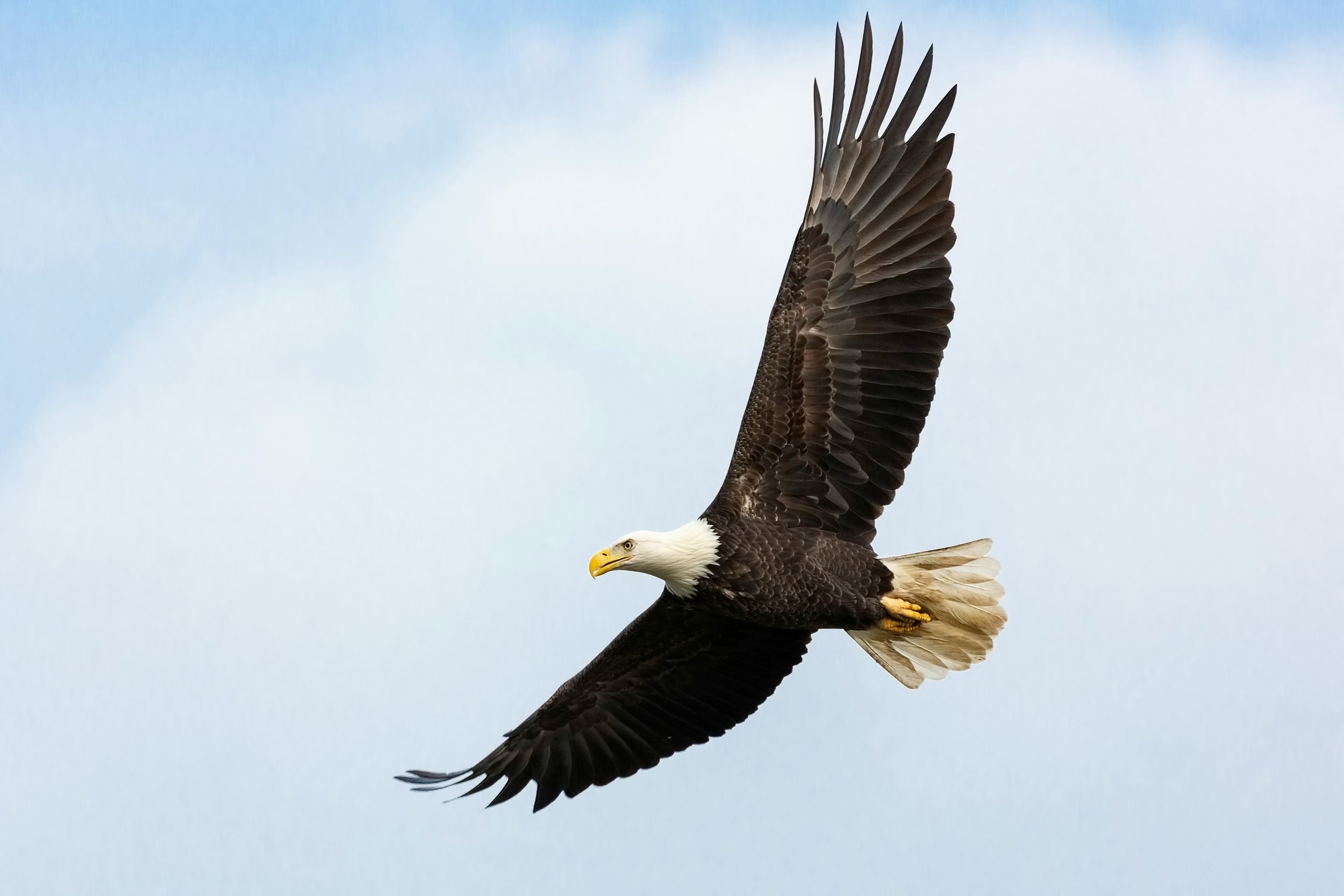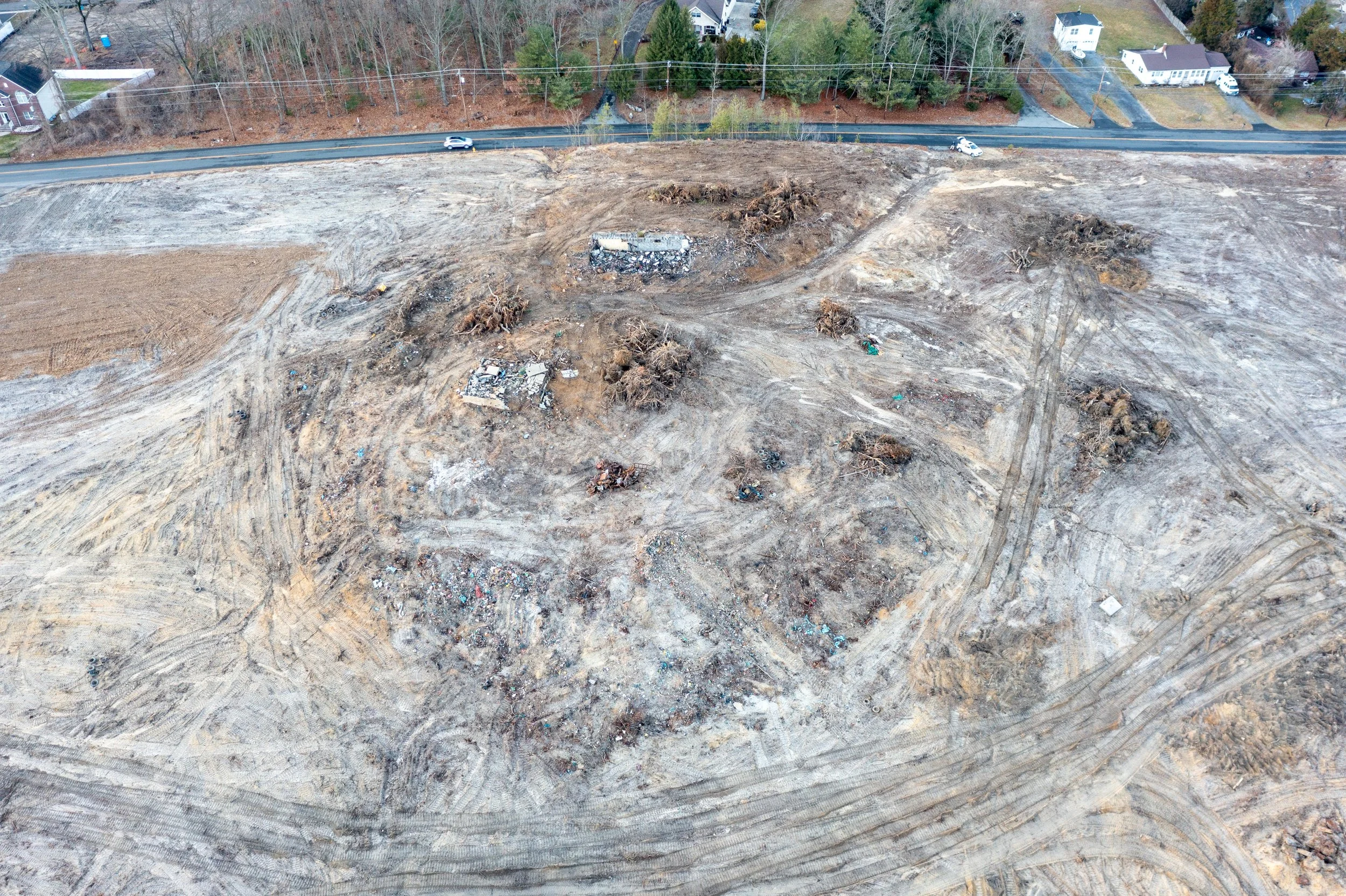Photo by Mathew Schwartz on Unsplash
On Tuesday, June 18, Kate was driving in Monmouth County when she was startled to find a bald eagle lying on the road near the carcass of a deer. The deer had been hit and killed by a car. While bald eagles primarily rely on fish for food, they are opportunistic and will scavenge when possible. This eagle had likely been drawn to the deer carcass for an easy meal when it, too, was struck by a vehicle.
Kate pulled over and found the eagle had already died. After contacting the Assunpink Wildlife Conservation Center, it was determined that the eagle was one of a mated pair living in the area. Though no longer endangered and delisted by the Migratory Bird Treaty Act, bald eagles are protected by the Bald and Golden Eagle Protection Act. They are impressive creatures at the top of the food web, who are often considered bioindicators of ecosystem health and habitat quality. The deaths of both animals in the same location are not a coincidence. They reflect the tensions between development and wildlife habitat in Monmouth County. Kate was especially saddened by the loss, knowing the local community had worked to protect this eagle pair from the growing number of warehouses in the area. Bald eagles are typically monogamous, forming strong lifelong bonds and maintaining the same nest site for years (Cunningham et al., 2019). “As an ecologically conscious individual part of an even larger ecological community, I wanted to share my dismay and advocate for the conservation of our local lands.”
The bald eagle is a powerful symbol of American freedom and resilience, admired for its strength and majesty. Once teetering on the edge of extinction due to habitat loss and the widespread use of DDT, bald eagles have made a remarkable recovery thanks to decades of conservation efforts, legal protections, and growing public awareness (Bowerman, 2002). Their resurgence remains one of the most inspiring conservation success stories in the United States, reminding us how important it is to protect animal habitats.
Preserving open space is essential for wildlife survival. It safeguards critical nesting and foraging areas and helps maintain the natural corridors animals use to move safely across the landscape. Science-informed, ecologically thoughtful planning can reduce the impacts of development on wildlife and ecosystems, making it possible for both people and nature to thrive. Organizations like Monmouth Conservation Foundation play an essential role in this effort, protecting land, preserving habitat, and providing environmental education that fosters a deeper connection to and understanding of the natural world.
Habitat loss due to development is a contributing factor to human-wildlife conflict in Monmouth County. Photo by Fred Yahn
According to the New Jersey Department of Fish and Wildlife, summer is the peak season for wildlife activity, with animals nesting, foraging, mating, and raising young. Unfortunately, this also leads to a rise in wildlife-vehicle collisions. Summer consistently reports the highest number of road interactions, mirroring the timing of this incident. As New Jersey’s human population grows, development adds pressure on wildlife. In response, the Department launched the Connecting Habitat Across New Jersey (CHANJ) initiative to help residents support and protect local species. Through the CHANJ Wildlife Tracker, citizens can report wildlife crossings or roadkill, generating data that informs conservation and identifies priority areas for safe crossings. Since its launch, over 800 sightings have been submitted across nearly 50 species.
This eagle’s death is more than a tragic moment. It is a call to reflect, learn, and take actionable steps toward building a future that supports both human progress and the natural world. Responsible development, grounded in science and environmental sustainability, can help ensure that places like Monmouth County remain rich in both human opportunity and natural biodiversity. MCF encourages readers to drive cautiously during peak wildlife activity, especially in known crossing areas, to report sightings through the CHANJ Wildlife Tracker, and support ongoing efforts to preserve the land, wildlife, and natural heritage that make our region special. #KeepMonmouthGreen
MCF is proud to steward open spaces that allow wildlife like bald eagles to thrive. Photo by Jena Cosimo



